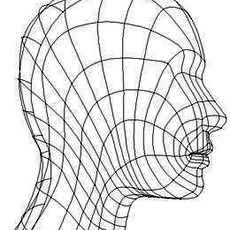▼ Tutorials
-
Lorsque l'on travaille sur image en mode "Canvas" on a souvent besoin d'effacer une partie ou en transparence l'effet de brosse que l'on vient de poser. Dans ce cas la technique de brosse par restauration de l'image de fond et non du fond de page (background) s'av�re n�cessaire. Ce type de brosse...
-
click Here for the animation in 320x240; missilesilo320x240.zip This Tutrial will Teach you how to create a Missile Trail using Maya, u will expirience The volumetric Cloud Shader, it's surface shading options, and other qualities of the volumetric cloud shader, I Think that thou I use maya 3...
-
Maya expressions and dynamics is great. We can produce some cool special effects using maya. Now we are going to reproduce some of the logo effect of the film "Matrix" using maya particles and expressions.Now let us begin. First we need to create all the 26 letters ,from "a" to "z". Creat----te...
-
I wrote this tutorial just to share with the maya community of this web site this trick I found to resolve a big problem, (at least for mine): how to paint on Subdivision Surface inside Maya. 1. This is an head I modelled for an incoming italian production of the Pool studio in Rome 2. Front ...
-
1. Create a NURBS surface and deform it a bit to get a nice-looking bumpy terrain. Create a camera 2. Open the Hypershader. Create a Blinn node and edit it as shown below: I highlighted in red the attributes that need to be edited. Don't forget the slight blueish Ambience, because sno...
-
Here is Another Tut for RenderMan via MtoR. This time we're going to animate parameters in the shaders control window. The first time I jump in the MtoR world I was wondering where was the set key buttons or Options, but I didn't find it anywhere so I did a very simple thing : I looked for it in...
-
Ok! Recently I bought the Advanced Shading Network Training video Tape from AW This tape hosted by Tom Kluyskens Talk about some advanced shading network and Hidden nodes like distanceBetween or closestPointOnSurface etc... and showed several way to use'em Looking this cool tape an idea comes ...
-
I this tut I will show you a technique for reducing rendering times in MtoR/RenderMan. 1 - First we setup a scene. For this example i use a fairly simple one but we supose that is a huge city landscape. 2 - Let see what we got. If you have it in your shelf, Hit the RenderMan Render button ab...
-
Ok! Another Tut for exploring the RenderMan capabilities via MtoR. This time we're going to work with shadow passes for compositing purpose There are several ways to output a Shadow only pass but i will show you two wich are not covered by the documentation (or maybe I'm blind) 1 - First we ...
-
In this tutorial you will learn how to use the alpha channel of your projected image to "stencil" your image over/under other images on your geometry with the use of a layered shader. first off build your self a nurbs sphere, make it look some thing like this: (You don't have to but it will loo...
-
Chapter 14 Facial Animation Expressing Emotion Copyright 1999 Peter Ratner (Excerpt from Mastering 3D Animation) When animating emotion, a reliance on only facial animation will have little substance if it is not combined with the relevant posture of the body. The attitude of the body should...
-
Chapter 7 The Structure of the Head and Features Modeling a POLYGON Head UPDATED Copyright 1999 Peter Ratner (Excerpt from Mastering 3D Animation) There are many approaches to modeling the human head. Most of these methods were designed to accomplish specific goals such as easier sculpting of ...
-
Step 1: First of all, the composition will need an alpha channel or a key. Since Hank was done in 3D, the raw untouched render and the alpha channel are easily separated by rendering with an alpha (RGBA). This could have been footage from a camera as well with the alpha obtained by keying out th...
-
Subdivision modeling is a procedure for creating smooth mod- els while keeping the total polygon count at a low level. Point counts are small so that the sculpting process is less confusing. New software developments, such as those in Maya and XSI, offer more robust subdivision modeling tools, a...
-
This time I will first explain a few useful tricks to seamless texture your models and then we will see how to do to make the texture maps look realistic. Since I will refer to examples and tecniques I explained in the other two tutorials, I suggest you to take a look at them). Well, let�s ...
-
Grab the melscript hereExpMulOBJ.zip A little introduction With more and more powerful processors becoming available to the average user at affordable prices, radiosity solutions are becoming increasingly popular. Maya, however, does not have a radiosity engine. This tutorial shows how to use ...
-
created this tutorial because manypeople in computergraphics fret greatly trying to make a wet looking shader. I also doit with a fast rendering shader that is easy and fast to set up,and doesn'tuse any plugins. It also doesn't hinder rendering speedlikea layeredshader can. Let's start. I ...
-
Hi everybody! With the second part of the tutorial (the first one was about the modelling) I will explain how to make a seamless texture map using a marvellous tool that you can find in Maya: the Convert to File Texture (Convert to Solid Texture in Maya 2.5). First of all I want to thank Mass...
-
What you need: 1. Unreal Tournament + latest patches 2. UED (UnrealTournament/system/UnrealED.exe) 3. Photoshop and preferably Painter3D or something like it 4. A texteditor 5. Patience 6. A p3d object model with texture tif for Painter3D (download here tiff ) Also read "Unreal Model Importing: ...
-
Developed by Legend Entertainment (Creators of Wheel of Time) Programmed by David Townsend townsend@patriot.net Tools you need To create animated models for Unreal mods, you will need the following tools: 1. A good 3D modelling/animation package, such as 3D Studio Max, Lightwave, SoftImage,...
-
Download Tutorial Scenes faking_outdoor_GI.zip First I have to thank Tom Kluyskens for helping me on the hard part of this tutorial. You'll learn here how to use a very powerful node: the closestPointOnSurface node. Tom has presented a course on that node during the rendering MasterClass at S...
-
In this section, I would like to use Deep Paint 3D to help me to indicate the location of UV on the NURBS surfaces. But 3D Paint package only recognizes polygons with UV. So, we need to convert NURBS to polygon, then export the polygons to 3D paint program. First, I will create bump map in 3...
-
I had to do some experimenting to get this working, so why not share that knowledge with all of you? Modelling Please note that the modelling is very basic and is only used here to support the shading. It is very similar to the glass modelling on the assistant site 1. Draw a curve that will...
-
Maya has some good volume rendering posibilities, but the use of the volume shader is not really documented in the manuals. Each ShadingGroup has an input for a Surface, Volume and Displacement Shader. What Surface and Displacement do is clear. What the volume shader is good for sounds obvious, t...
-
1. Create a normal projection texture. This will give you the texture and a 3D placement node feeding into a projection node. 2. Delete the 3D placement node. 3. Hook up the World Inverse Matrix attribute (from Camera or Spotlight) to the Placement Matrix attribute (of the Projection Node). If...
























